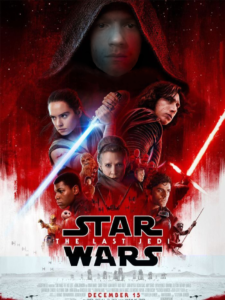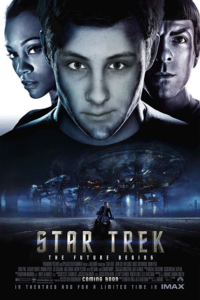Star Wars by Thian Armenia
Star Wars is awesome, and I do not throw that word around lightly. Well I do, but I really mean it right now. From its themes and storytelling to its designs and characters, Star Wars is all around a world-changing saga in its cultural and economic impact. And there is one thing that seals the deal — lightsabers!
There are lots of reasons to love Star Wars, and not a lot of content to have to catch up on. The official Star Wars canon — the content declared as part of the “real” Star Wars storyline by Lucasfilm — encompasses a lot, but thankfully not as much as some other franchises. The main bulk of it consists of the live action movies, of which there are currently eleven. These movies add up to a little over 25 hours worth of run time, which is not much compared to most other big in-universe film series. For instance, it is less than half that of the Marvel movies. The live-action movies are not all of the Star Wars canon, but the rest is animated content and is made up of only one series and an additional movie.
The live-action movies, however, are what most people associate Star Wars with, and at the heart of those is the “original trilogy,” the trilogy that inspired a generation. I call it this because of the depth of the movie and how it affected generations after its release. People from the generation that grew up loving the movie shared it with their friends and family from the next generation, and united over a common enjoyment of the series.
Thankfully for the next generation, they did not have to like the same parts of Star Wars as their elders because there was so much content to like. Star Wars worldbuilding was advanced for its time. Now we are used to movies that fit together like multi-million-dollar Legos to build a coherent world of imagination, but the first Star Wars movie was released in 1977 and seemed like the first movie to gain such traction as a multimedia-expanded universe.
A lot of this worldbuilding is so good because it was the first, and partly because of how it was used. The iconic lightsaber is a brilliant example. A laser sword is not revolutionary, but put it in the hands of a force user? It gains significance through context. Not only do the lightsabers make Star Wars more interesting, but even the ship designs made a splash to the point where “Star Wars-esque” can now be used as a description for a sci-fi ship, and most people get the image. Star Wars’ innovation comes from it being the first to put all the pieces together.
Aside from that, Star Wars is really cool. That is what establishes it as a iconic movie for any generation, and what establishes me as a giant nerd.
Star Trek by Finn Rubottom
Star Trek is just plain great. From its rich characters and complex plot to the almost completely accurate physics, and straight-up beautiful world and ship design, Star Trek truly takes the gagh (a Klingon delicacy).
Star Trek is a sci-fi show that has six spin-off shows and 12 movies. Star Trek has a rich plot that spans almost all of the shows, with events in the original series affecting the outcome of a series (canonically) decades later. Star Trek also keeps real world physics in the foreground, with the ships and vehicles using propulsion methods that, in theory, are feasible. The languages used in Star Trek (at least Klingon) are also full-fledged languages that you can learn. The ships are elegant, and the galaxy is full of beautiful worlds. It would not be a sci-fi show without lasers, and Star Trek does not disappoint. With three different types of phasers (handheld “laser” weapons) and larger ones mounted on ships, weaponry is no problem. Weaponry for no reason would not be very smart, so of course there are enemies to fight. In the original series, the Klingon Empire is the prevailing bad guy. Later on, after the Klingons have made peace, a more existential threat appears. This is the Borg, a species intent on complete domination. The Borg are constant throughout the later series.
Every world you see is well-designed, even the original series worlds, which were notorious for being so underfunded that they had to run an extension cord to the captain’s chair for the lights. With the addition of more advanced graphic rendering capabilities, the visuals only improved. Aside from Deep Space 9, which is largely regarded as the “one we don’t talk about,” physics plays an important role in the technologically advanced Star Trek universe. With such a key role, it is right that almost all events are accurate according to the understanding of physics that was available when the episode was written. It is also of note that the first flip phones were inspired by the communicator. All things considered, Star Trek just has more to enjoy and has had a bigger impact on the world.


